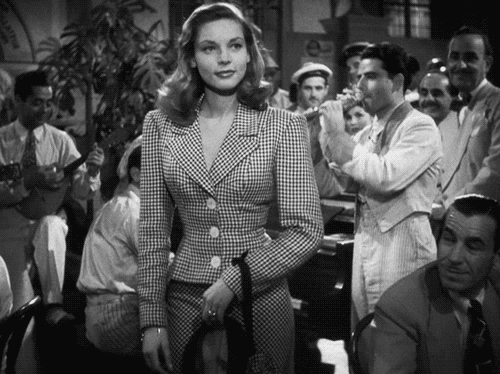“Sant’Elia” By Ferdinando Scianna 1980)
Monthly Archives: August 2014
Monkology
 Thank you, Longform for reprinting Lewis Lapham’s 1964 profile of Thelonious Monk:
Thank you, Longform for reprinting Lewis Lapham’s 1964 profile of Thelonious Monk:
At the end of the hall on the ground floor of a tenement on New York’s West 63rd Street, behind a rickety door, in three small rooms littered with cardboard cartons, catsup bottles, half-empty suitcases, Japanese dolls in glass boxes, soup dishes stacked on a piano, team irons, clothes hanging from nails in the fiberboard walls, shopping bags and children’s toys, lives Thelonious Sphere Monk.
There he has lived all but seven of the 43 years of his life, first with his mother, his brother and his sister, and then with his wife and two children, entangled in a domestic clutter wholly inappropriate to his reputation as the weird and enigmatic genius of modern jazz.
Among all the jazz musicians of his generation, none was reported “further out” than Monk. Tales of his strangeness drifted through the stale and noisy air of every jazz joint. The hipsters, taking his name for an obscure joke, called him “The Mad Monk” or “The High Priest of Bop.” They made much of his clumsy dances, his fondness for silly hats, hit gift for cryptic and whimsical statement. (In response to the question “Why do you play such strange chords, Mr. Monk?” he once told a disc jockey, “Those easy chords are hard to find nowadays.”) It was always assumed that he could be found in some dark back room, a remote, if not imaginary, figure, like the Pied Piper of Hamelin.
But all the while, oblivious to the smell of boiling cabbage in the corridor, he has remained on West 63rd Street, a sentimental man with kind eyes and a full beard, playing his blunt and angular jazz on the grand piano in his kitchen.
Now suddenly, after 20 years of neglect, the critics are beginning to suspect that Monk may be the dominant jazz musician of his time. His conception of rhythm and harmony has influenced the playing of such dissimilar musicians as Dizzy Gillespie, Dave Brubeck, Miles Davis, John Coltrane and Sonny Rollins. Several of his tunes, among them Around About Midnight, Off Minor, and Epistrophy, have become jazz standards. His use of dissonance is analyzed in composition courses at the Julliard School of Music. Recently published articles assign him a niche in the development of jazz comparable to those of Jelly Roll Morton, Louis Armstrong, and Duke Ellington.
And yet, notwithstanding his new fame, the old rumors persist. Ask anybody who does not know him well, and he will say, “Yeah, man, that Monk, he’s a funny cat, man, he’s something else.”
[Picture by William Claxton]
Bronx Banter Interview: John Schulian
Today marks the publication of the Library of America’s latest sports anthology—Football: Great Writing about the National Sport. It’s edited by our old chum John Schulian.
The book is terrific and I recently had a chance to chat with John about football writing and how he approached putting this collection together.
Dig in.
Alex Belth: When you read boxing or baseball anthologies, there’s usually a lot of material written before WWII. I noticed less material from the early decades of the last century here. What is it about the more old-timey football writing that makes it uninteresting?
John Schulian: I know how it must look: the old-timers don’t seem to get much love even though I’m an old-timer myself. What you have to realize is that football before World War II, and even for more than a decade after it, was hardly the cultural and economic behemoth it is today. Baseball, boxing, and horse racing ruled the sports pages and the nation’s imagination. Football had to be content with harbingers of a better tomorrow—Jim Thorpe and Bronko Nagurski running wild, Slingin’ Sammy Baugh uncorking touchdown passes, George Halas and his fellow dreamers laying the foundation for the National Football League. It was swell that Fitzgerald and Irwin Shaw found inspiration in the games that gave old alums in raccoon coats a reason to howl, but the truth was still the truth: Football had some serious catching-up to do.
Beyond that, the writing it inspired was generally pretty dreary unless you have a high tolerance for adjectives, mixed metaphors, and stories dashed off by scribes who nipped from their flasks for four quarters. You’ll notice, for instance, that I made a point of not including Grantland Rice’s oft-reprinted paean to the Four Horsemen of Notre Dame. To do so would have meant wading in the sludge of old Granny’s hyperbole, and I wasn’t about to risk scaring off readers that way. Instead, I went with an excerpt from his memoir about how he came to write the piece and, ever since, I’ve wondered how different it would be if Rice had been able to avail himself of today’s press-box replays and the locker-room interviews that were so scarce when he walked the earth.
Football is hard to cover under the best of circumstances, and the old-timers clearly suffered because of the primitive conditions under which they worked. I like to think that’s why I came up empty when I looked for compelling pieces by Heywood Broun and Damon Runyon. Both were memorable writers and, yet, when I read what they had to say about the sport, it seemed strained, uninformed, almost naïve—in other words, it was a lot like everything I ever wrote about hockey. I thought I would do better with Stanley Woodward, an ex-college lineman whose greatest achievements were as the no-guff, no-pandering sports editor of the New York Herald Tribune. I even knew a line from the Woodward story I hoped to use. When an inconsequential gaffe made a University of Michigan lineman the villain of a major upset, Woodward wrote: “Attributing that catastrophe to such a cause was like blaming the Johnstown flood on a leaky toilet in Altoona, Pennsylvania.” Let’s just say the line may have seemed so memorable because everything Woodward wrote before and after it was so forgettable.
Now I stand before you grateful that I was able to find what I did from football’s Pleistocene era. Grateful for W.C. Heinz’s visit with Red Grange, the first of the great broken-field runners, and for Myron Cope’s hilarious yet compelling interview with the self-named Johnny Blood, a vagabond as both a player and a coach. Grateful for Shirley Povich’s generosity when covering a football slaughter, and for the hat President Truman lost after an Army-Navy game, as if he knew Red Smith was looking for a way into a column. And if someone were to step forward now with a sheaf of the kind of pieces I couldn’t find, I’d be grateful for that, too. But it wouldn’t have changed football’s status as a stepchild in those early days, and if it pains you to read that, just hold on. Things got better in a hurry.
AB: I loved the Myron Cope piece. I know he’s best remembered as a broadcaster in Pittsburgh, but he had serious chops as a writer. He’s my favorite of the Sport magazine freelancers from the ’60s.
JS: Cope was an absolute joy to read whether it was in Sport or Sports Illustrated or even True, which in the Fifties and Sixties was always showcasing sports writing heavyweights like W.C. Heinz and John Lardner and stars in the making like Jimmy Breslin, Dave Anderson, and Jerry Izenberg. Cope fit right in thanks to his sly wit and affinity for exotic characters. One month he’d be writing about Bo Belinksy, Muhammad Ali, or a self-promoting football scout named Fido Murphy, and the next month he’d be telling the sad tale of the Steelers team that sobered up for a showdown with the Giants and got hammered in a non-alcoholic way. But mention his name in Pittsburgh these days and the Cope the locals remember wasn’t just the Steelers’ funny, passionate, idiosyncratic play-by-play man, he was the inventor of the Terrible Towel, which for hardcore fans puts him in the same category as Jonas Salk.
Myself, I’m a lot more impressed by a collection of his best magazine work called Broken Cigars, and I’ve never been able to understand why someone hasn’t reprinted it. But having said that, I’m here to tell you Cope’s greatest achievement was as an oral historian. Sports Illustrated sent him out to track down the seminal figures of pro football’s early days, and he came back in 1970 with the makings for The Game That Was, which did for the sport what Lawrence Ritter’s The Glory of Their Times did for baseball. The Library of America didn’t want a lot of book excerpts in Football, but I never doubted for a minute that Cope’s interview with a free spirit—wild man, actually—named John McNally would make the cut. While he was migrating from one college to another, he and a teammate wanted to earn some pocket money by playing semipro on the side. They couldn’t use their real names, of course, so they searched and searched and finally found just what they needed on a poster for a swashbuckler movie called Blood and Sand. All the man who became Johnny Blood had to do after that was wait for Cope to show up.
AB: Beyond Red Smith and Shirley Povich, I awas taken with the column on Jim Brown by Jimmy Cannon. Those are not a pair I would have put together. I knew there’d be a Jim Brown story in this collection—how could there not be?—but I wouldn’t have expected one from Cannon. I know Cannon was a great columnist in his prime but his reputation has faded through the years. Were you looking for a Cannon piece specifically?
JS: I’ve been campaigning to put together a collection of Cannon’s greatest hits for the past few years, and though I’ve yet to find a taker, I always bring up his Jim Brown column when I’m bending someone’s ear. This is Cannon at his absolute best, spending the afternoon watching Brown trample the Giants and then taking what he saw in a direction that never would have occurred to another writer. Who else would have made the leap from a game that big to a recollection of the day he first heard Enrique Caruso, the great opera singer? Who else would have used the occasion to wax nostalgic about “the old neighborhood” and a barbershop run by a guy named—stop it, you’re killing me—Joe? But somehow Cannon makes it work with the magic he had when the stars were aligned and the wind was at his back. He was always stretching, always straining to out-write everyone, and a lot of times you could hear him grunting and groaning from the effort. This time, however, his words take flight, and the greatness on display is his as much as it is Brown’s and Caruso’s.
If you’re surprised to find Cannon writing about Brown, don’t be. The year was 1963 and Brown, to the best of my knowledge, had yet to rough up his first lady friend. Later, of course, it would become a recurring theme in his life, one I suspect Cannon, imbued with dry-drunk gallantry, would have used as a reason to tee off on him, disdain him, or both. But in or out of trouble, no one ever denied that Brown is a fascinating and complex character—perhaps the greatest running back ever, a movie star of some significance, a mentor for kids swept up in L.A. thug life. His name echoes through any number of the pieces in the book, and if I’d had more pages to work with, there would likely be one or two others devoted solely to him. God knows they’re out there, splendid work by splendid writers. But when I could only choose one, Cannon made it easy for me.
AB: What stuff did you include from the ’60s?
JS: Myron Cope would have been an obvious choice, but he was already in the book. The same with Bill Heinz, whose Run to Daylight! was the first great look at the brilliance and indomitability of Vince Lombardi. I had already committed to Heinz on Red Grange, though, and I never regretted it because St. Vincent inspired so much compelling writing. Leonard Shecter stirred things up with a profile of Vince Lombardi for Esquire that was so mean it made Mrs. Lombardi cry; I loved it in my Young Turk days, but when I gave it a second look all these years later, it seemed gratuitously cruel and, much as I admire Shecter, riddled with buncombe. Sorry, no sale. On the other hand, there was the Jerry Kramer-Dick Schaap collaboration, Instant Replay, the chronicle of the Packers’ 1967 season that ruled the bestseller lists and begat a stampede of as-told-to books. We’re talking about work done nearly half a century ago, and it holds up because of the authors’ commitment to the truth. Nor does it hurt that Lombardi endures as a subject to this day. David Maraniss, the superb Bill Clinton biographer, seized on the old boy’s staying power and delivered a state-of-the-art study of Lombardi. If I’d failed to include something from it, I’d be guilty of dereliction of duty.
I feel the same about the excerpt from Paper Lion, George Plimpton’s chronicle of his training-camp exploits as the Lions’ last-string quarterback. The grace and self-deprecating wit in Plimpton’s prose always reminds me of Cary Grant’s acting. But even without my confession that I’m a sucker for it, any literate football fan should see the Plimpton excerpt coming. I hope I’ve thrown readers a curve—pardon my mixed sports metaphors—by mixing in two looks back at the Sixties by writers from other precincts. First is Baltimore boy Frank Deford, the star in SI’s crown for so many years, lifting a glass to the city’s beloved Johnny Unitas. Then there’s Jennifer Allen recreating a New Year’s Eve with her father, George Allen, after he’d been fired as the Los Angeles Rams’ head coach on Christmas Eve. Happy holidays, huh? It felt good to include the excerpt from Jennifer’s book Fifth Quarter for a couple of reasons. One, she’s an incisive and fearless writer. Two, I was able to make amends in some small way for the many times I described George as the NFL’s answer to Richard Nixon. Yes, he could be pretty crazy, loving ice cream because he didn’t have to waste time chewing and writing me off as a Baltimore fan on first meeting simply because I’d worked on a newspaper there. But there was never any doubting his genius for defense or his love for the beat-up old pros who populated his roster. And here’s what should have convinced me that my opinion of George needed an overhaul long ago: Those old pros loved him back.
Jimmy Breslin, the ultimate New York columnist, loved old pros, too. I get the feeling from his piece on Y.A. Tittle’s last stand that he may have loved them most when they lost. They didn’t whine or bitch, they just picked themselves up and moved on because they knew they had done everything they could. It wasn’t enough, but it was all they had, and there was something noble about taking satisfaction in that, the way Tittle does when he can’t quarterback the Giants past the Browns.
Breslin, like Bill Heinz before him, knew the losers’ locker room was fertile ground for great stories. But every time he looked around before he began covering the city at large, he found more young scribes in there with him. It was all part of the seismic change that the Sixties brought to sports writing. The best of them threw off the shackles of clichés and rah-rah coverage and started serving up humor and social commentary. If they could work in a song lyric by the Grateful Dead or something Humphrey Bogart said in Casablanca, so much the better. On the East Coast, there was Larry Merchant, who had made irreverence and unblinking insight his stock in trade first as sports editor of the Philadelphia Daily News and, by the end of the decade, as a columnist at the New York Post. He knew something about football, too, having been a schoolboy star in New York and a self-described “last-string halfback” on Bud Wilkinson’s Oklahoma powerhouses in the Fifties. What Merchant knew even more about, however, was the cultural significance of Broadway Joe Namath. I think you’ll see what I mean in the excerpt I pulled from his book … And Every Day You Take Another Bite.
At the same time, on the other side of the country, Jim Murray was playing his Los Angeles Times sports column for laughs with a mix of joy and intelligence that hadn’t been seen since Ring Lardner and his son John were running amok. Murray looked at sports in a funhouse mirror, delivering lines that are still quoted in press boxes and around breakfast tables half a century later. And oh, did he have fun when the Jets upset the Colts in the Super Bowl: “The missionaries ate the cannibals.” You know that one’s in the book.
What you may have realized by now is that none of the writers representing the Sixties were hard-nosed, watch-every-practice, grill-every-source beat reporters. The guys who fit that description best were Paul Zimmerman, who made his bones at the pre-Murdoch New York Post and later moved to Sports Illustrated, and Will McDonough, the Boston Globe enforcer who punched out a Patriots defensive back. I suppose I should mention Tex Maule, too, because it was his story in SI about Unitas leading the Colts over the Giants in overtime that bore the headline “The Greatest Game Ever Played” even though he never used those words himself. Maule was a reformed trapeze artist and former public-relations man who became a tool of the NFL in its war with the ragtag but thoroughly enjoyable American Football League. (Enjoyable, that is, to those of us enthralled with 57-56 scores and old goats like George Blanda and Tobin Rote.) But Maule’s greatest sin in the context of this book was that he was a ham-fisted writer, which disqualified him from inclusion. Alas, Zimmerman and McDonough had similar artistic deficiencies, so their prose didn’t make the cut, either, and that’s unfortunate. Without the digging they did—Zim on the intricacies of the game, McDonough on front-office shenanigans—the stylists who followed them never would have had such a well-lit path to travel.
AB: Of course, a certain amount of the material in a book like this is going to be personality-driven. Were there any specific players or coaches you wanted to feature?
JS: It would have been a fool’s mission to try to make room for all the players who’ve been anointed as superstars and all the coaches who’ve been praised as smarter than Einstein. And big games? The nation turns its lonely eyes to them every weekend, in every NFL division and college conference. Biggest game of the season, biggest of the century, no matter how many times we’ve heard it, we still love to fall for it. Everything is outsized—the players, the coaches’ egos, the alumni pressure, the TV money—and the book could easily have wound up looking like it was on steroids. But I didn’t want to scare off people by turning it into a doorstop.
The best solution I could come up with was to select pieces that were, for lack of a better word, emblematic. You want quarterbacks, you’ve got Deford on Unitas and the pluperfect Charlie Pierce on Peyton and Archie Manning, which I like to think covers a lot of territory historically. You want linebackers, you’ve got Arthur Kretchmer on Dick Butkus, and while Kretchmer was no sports writer, I admire the way he parked himself next to Butkus and hung on for dear life. on the sideline and zeroed in on the guts of the game. You want coaching legends, you’ve got the street-smart novelist Richard Price putting his Bronx accent up against Bear Bryant’s tobacco-cured mumble and Gary Cartwright, a Texas legend, deciphering what went on under that hat Tom Landry wore. We’re talking about big names here—icons, if you believe in that sort of thing—but each piece reveals its subject as a human being. With all the blather and blare surrounding football, we need to be reminded of that occasionally.
It would seem more difficult to provide that kind of perspective in a game story—twenty-two large gentlemen in the equivalent of one freeway pile-up after another—but the beauty of the best game stories is they tap into narratives as unique as snowflakes. Of course, I can’t give you every great one ever written, but you’ll certainly get the feel of them when you read Dan Jenkins merrily tweaking Notre Dame for playing for a tie against Michigan State, and Leigh Montville hanging onto his hat after Doug Flutie’s magic act against Miami. And don’t let me forget Pat Forde weaving together the many themes of Boise State’s otherworldly Fiesta Bowl victory over Oklahoma—the trick play, the running back’s marriage proposal, the idea that a team from a state famous for potatoes could fly so high. It was one of those stories Americans love, the underdog triumphant, but in college football’s latest realignment, the power conferences have done their utmost to make sure you’ll never see anything quite like it again.
So if you don’t mind, I’m going to revel in my own favorite upset for a moment. There’s no story about it in the book, but there isn’t a red-blooded University of Utah graduate who doesn’t get all puffed up every time he thinks of it. I say this in full confidence because I happen to be one. Anyway, there the Utes were in the Sugar Bowl, the undefeated champions of the Mountain West Conference, whatever that was worth, and it certainly didn’t seem like much to mighty Alabama on January 1, 2009. The Crimson Tide strutted into the Superdome in New Orleans as if they were about to be served a tray of red velvet cupcakes, and the Utes bitch-slapped them with 14 fast, furious points. That’s right, Nick Saban: all those blue chippers of yours got bitch-slapped. They tried mightily to come back, and, brother, every Ute fan had seen that movie before. Start like your ass is on fire, go toes up before halftime. But not these Utes. Somebody else could roll over and play dead. They were going to knock the snot out of Alabama. Final score: 31–17. I’m not counting on a repeat performance any time soon now that the Utes are in the Pac-12 and praying they can break .500 someday. But I’ve still got my memories of that sweet, sweet Sugar Bowl. Damn, Nick Saban looked good with his tail between his legs.
AB: I like how you included profiles of icons like Butkus and Bryant that were written by non-football writers. The Price story, in particular, is such an odd pairing of writer and subject and yet the reader comes away with a vivid picture of Bryant. What is it about being an outsider that can make the writing and reporting so sharp?
JS: First, you’ve got to imagine the plight of the harried soul on the football beat whether for a newspaper or website. He or she has a million things to worry about—trades, roster moves, rumors, next week’s big game, players’ injuries, coaches’ lies, news stories, features, sidebars, blogs, tweets—and I haven’t even mentioned the editors who are constantly crying out for more, faster. My head hurts just thinking about it. I know there are some hardy souls out there who thrive on such pressure, but sooner or later it’s got to diminish either the desire or the time and freedom it takes to write something that’s both stylish and insightful. They reach a point where the job is as much about survival as ir ia anything else. Their eyes glaze over, and when that happens, they just want to see the finish line.
Not so Richard Price and Arthur Kretchmer. Price was a young literary lion when Playboy enlisted him to profile Bryant and Kretchmer was the magazine’s editorial director who may have used his clout to get the Butkus assignment. They could stroll in, hang out, and look around until they seized on things a weary beat writer, even in the days before the, might have taken for granted. These outsiders had landed on what might as well have been the moon, and thanks to their cushy magazine deadlines, they could revel in the newness and the strangeness of it all.
After reading what the two of them wrote, I gather that Kretchmer was less an outsider primarily—most likely solely—because of the friendship he seems to have struck up with Butkus. And if they weren’t friends, Butkus certainly didn’t mind his company. It wasn’t just that they had lunch together, it was that Butkus gave him the gift of blunt honesty, and got him on the sidelines for a Bears game, too. That way, Kretchmer could calculate the seismic force of each play, hear the cracks and the thuds and the grunts and the sound of a Packers defensive end telling the Bear across from him, “I’m going to kill you.”
Unfortunately, the Bears were dreadful in their patented way—a constipated offense and a defense that took solace for defeat in the number of bruises and broken bones they meted out. In the midst of such inferiority, there was Butkus with his unsurpassed genius for violence, playing on a knee that was essentially a garbage pail, trying to defy futility. Kretchmer was moved to ask him why he kept beating his head against the wall that way. It was a question the daily press corps had undoubtedly asked, too, but sometimes it’s the outsider, the guy who’s not part of the daily inquisition, who gets the best answer. So it was when Butkus told Kretchmer, “That’s like asking a guy why he fucks.”
Price never pried as pithy an answer out of Bryant during the week he spent in Tuscaloosa. Or if he did, he didn’t understand what the Bear was saying in that unfiltered-Chesterfield voice of his. But it all played perfectly into the pose Price adopted for the story. It was 1979, after he’d scored big with The Wanderers and before he scored bigger with Clockers and Freedomland. He went to Alabama as the ultimate fish out of water, a New York wisenheimer thrust into the land of Ku Klux Klansmen and Freedom Riders. He had an earring and the longest hair this side of Duane Allman, and he was intent on milking everything he could from the reverse of stereotypical urban paranoia.
Mercifully, the piece doesn’t come off as an attack on the South unless you’re sensitive to the mileage Price gets from his failure to understand a joke Bryant tells. “I guess that ain’t funny to you,” Bear says, scowling. No way Price can make himself confess that Bryant might as well have told the joke in Urdu. Price simply tacks his discomfort onto everything else he has felt during his visit to this strange land, and, wonder of wonders, he gets away with it. True, he doesn’t break any new ground on Bryant, but that’s not the point. He’s goofing on the Bear, albeit with a healthy dose of respect. But he’s also goofing on himself, and he obviously enjoys it, even revels in it. He might not have seemed very bright to Bryant, but he was smart enough to get out of Tuscaloosa in one piece.
AB: My favorite game story in the book is Tom Archdeacon’s column on Jackie Smith. The media crush that Smith faced after that game seemed relentless according to Archdeacon’s piece and yet he was probably the only one to notice and incorporate Smith’s son into his story. There were so many columns written about that game. What made Archdeacon’s stand out?
JS: It’s a masterful example of what a true craftsman could do in the days of p.m. newspapers if he kept his eyes and ears open. While the morning-paper scribes from the East Coast were racing to make, say, a 9 p.m. deadline, Archdeacon might not have had to file for the Miami News, may it rest in peace, until 4 or 5 a.m. If he was like a lot of us who had that luxury at some point in our careers, he used every minute of it. It’s obvious he stayed in the Cowboys’ locker room to the very end—it’s how he gets rich, novelistic details like a writer stepping on Jackie Smith’s towel and another one accidentally leaving a line of ink on Smith’s shoulder blade.
The most impressive move Archdeacon made, however, was to zero in on Smith’s teenaged son, who had come to see his father’s hour of glory in the Super Bowl and instead witnessed an admirable display of courage and grace in the wake of that dropped pass. Not every athlete handles a situation like this as well as Smith did, believe me. Some get nasty, some hide in the trainer’s room, some vamoose. But the good ones will stand there and face wave after wave of reporters, just the way they would if they were the hero instead of the goat. Smith was obviously one of the good ones. But a lot of writers were going to say that the next day. Archdeacon needed something that would separate him from their number, and young Darrell Smith, son of Jackie, was it. His presence provided a new dimension to the scene in the locker room and set the stage for his father as a sympathetic figure. I don’t recall if any other writer bothered to talk to the boy, but I covered that game and I know I didn’t. I caved in to my a.m. deadline and belabored the obvious by writing about Terry Bradshaw. When I read Archdeacon’s column the next day, I gave myself a 15-yard penalty for lack of imagination.
It wasn’t guilt or shame that moved me to include Archdeacon in the book, however. I was just seeking an ounce of justice. I’m not sure how many people read what he wrote when it ran—the Miami News’ circulation was pitiful—and here was a chance to give it a second life. Archdeacon was someone whose work I had admired instantly, and I always thought he deserved a wider audience. I can certainly think of a lot of magazines over the years that could have benefited from his prose. But he stayed with the News until it sank, and then moved to the Dayton Daily News, his hometown paper, where he’s still writing better than a lot of bigger names with bigger paychecks in bigger cities. In a way, I suppose, he’s like Jackie Smith, more of a nobleman than you ever expected to find in his calling.
AB: I also loved the John Ed Bradley piece because it talks about the game from the inside. I’m crazy about John Ed’s writing, though, so I’m biased. When you were putting together this book, did you know that you’d include one of his stories?
JS: Not only did I know John Ed would have a piece in the book, I knew which piece it would be. He’s written a multitude of keepers in his career, but he soared highest when he dug into his self-imposed exile from the LSU football program he had graced as a player and that haunted him for years afterward. Once his soulful, painful reminiscence ran in Sports Illustrated, it was obvious that John Ed had much more to say, and he said it in his memoir It Never Rains in Tiger Stadium. It’s labeled as a book about football, naturally, but it’s really about a young man’s struggle to come to grips with who he is. It’s about the human condition, which is what the best sports writing is always about.
The fact of the matter is, I don’t think of John Ed as a sportswriter, and I haven’t since the first time I read him in, I’m guessing, the early ’80s. It was a piece he wrote when he was at the Washington Post, and it began with him and LSU’s starting quarterback sitting on a hill on campus, drinking a few beers and wondering what the future held. The Post’s sports staff was brimming with talent then, the way it usually is, so finding terrific stories and columns was hardly a surprise, but this was so far beyond the norm that I was gobsmacked. Here was a guy who should have been taking baby steps at a powerhouse newspaper and he was producing work that fairly shouted he had books in him, serious books. That hardly qualifies me as a literary talent scout. There were lots of other people saying the same thing. But I’m still proud to have been there at the beginning.
AB: Did you make a conscious effort to include football stories from all levels of competition—high school, college, the pros—or did you just select what you thought was the best writing?
JS: A book like this is first of all about the writing, but it’s also about the voices of both writer and subject, and the players and coaches who are emblematic of something larger, an era, perhaps, or a signature style of play. Whether the writing came from newspapers, magazines, or books didn’t really concern me. Naturally, magazine pieces, crafted in relative leisure, are going to be more polished than newspaper pieces, which are often written in a race against deadline that leaves no time smooth out their rough edges. But sometimes those ragged edges give the newspaper pieces the immediacy and passion that makes them memorable, even collectible.
I knew from the outset that the pros and the colleges were going to dominate the book. After all, what’s football without domination even when we’re just talking about its literary side? But I wanted high school football in the mix, too, because it’s so deeply ingrained in popular culture. (It’s also deeply ingrained in me—I read everything I can find about my old school’s team.) The obvious book to turn to was Buzz Bissinger’s Friday Night Lights, which is nothing less than a masterpiece. It not only reminds readers of the joy and pain of high school football—and of adolescence—it explores the otherworldly nuttiness that envelops the sport in Texas. So, mission accomplished, right?
Not so fast, buckaroo. The next thing I knew, I found “Friday Night Tykes,” a smart, insightful look at preteen tackle football in the age of concussions. Naturally, it was set in Texas, too. Bryan Curtis wrote it for Texas Monthly, which by now should have retired the trophy for the country’s best regional magazine, and he did it without getting up on a soap box or passing judgment or any of the other traps a lesser talent might have walked into. He just laid his story out there and let the reader make up his own mind. By the time I finished reading it, all I could do was borrow a figure of speech from the kids Curtis had written about: he was so beast.
AB: Football isn’t really considered a writer’s sport, at least not in the way baseball or boxing is. You edited a collection of great boxing writing for the Library of America. Did you worry that you wouldn’t enough great material to chose from?
JS: I was too dumb to be scared that I might not find enough first-rate material to fill a book. I’ve been reading great football writing since I decided I wanted to make a living playing with words in press boxes, and I knew it was out there. But I wouldn’t be foolish enough to tell you that football is a writer’s sport the way baseball used to be and boxing will be until they throw the last shovel of dirt on its coffin. There’s always been secrecy and paranoia in football, but it’s gotten worse over time. The evidence is right there in Roy Blount Jr.’s elegy to the freedom he had when he wrote . . . About Three Bricks Shy of a Load. Everywhere Blount goes on a visit to the Steelers, the team whose illustrious predecessors were at the heart of his book, he’s stymied by rules and badgered by nattering PR honks who would have been used for crow bait back in the day. And that’s no way to find out anything about anybody.
Great players can drift through their careers today as relative strangers to the people who cheer for them, worship them, maybe even want to be them. The coaches have always been on the secretive side—not enough prunes in their diet, I think—but writers could work around that. They learned to roll with coaches’ bland pronouncements and shameless prevarication because there were always players and assistant coaches who would tell them the truth or at least nudge them toward it. But for me, the real satisfaction in writing about football didn’t come from dissecting injury reports, and I sure as hell never wanted to loot a head coach’s office in search of a game plan. I probably wouldn’t have understood it anyway.
My aim was to find out what made the players tick. If I sat down with them—the good ones anyway, the ones who responded to thoughtful questions—I knew the odds of succeeding were in my favor. A lot of the guys I interviewed were incredibly bright and articulate, or they were blessed with wit and the kind of go-to-hell attitude that made them savor the massive collisions that happen on every play. If a writer can get 20 minutes with someone who fits either of those descriptions, he has a fighting chance to turn out something worth reading, at least for purposes of a newspaper piece or its Internet equivalent. For something longer, of course, a writer needs even more access. How much? Well, read Al Silverman on Gale Sayers coming back from a brutal knee injury or Michael Lewis on the high-wire lives of placekickers. Those weren’t done in a day, my friend.
The problem now as I see it—and I admit that I’m looking at it from a great distance—is that writers don’t have the kind of access my generation did. It’s that way in big league baseball, too, but football is the mother of managed media access. You’ve got staged press conferences, and only the head coach and a limited number of players are trotted out for them. Worse yet, everybody seems to be sticking to a script. Working the locker room seems to be a lost art, if indeed writers are even allowed inside. The best, or at least the most colorful, way to fight that is to do what T.J. Simers, the erstwhile L.A. Times columnist, used to do, and walk in anyway. He’d tell anyone who tried to stop him that he had a job to do, and he wasn’t about to be stopped. I confess I was never a fan of T.J.’s work once he left the football beat, but his balls belong in the hall of fame.
Much as I admire writers who aren’t afraid to tilt with the NFL’s windmills, I’m just as impressed by those who refuse to be fazed by the climate of secrecy. They’re scattered around the country, looking at football from fresh angles, turning out pieces so smart and well-reported and beautifully written that geezers like me are forced to admit that sports writing didn’t begin and end with us. Bryan Curtis, whom I mentioned earlier, is right there with the best of them. Wright Thompson, whose ode to Southern football is one of the book’s highlights, looks like he can do anything he sets his mind to as long as he isn’t writing about Elaine’s, the old New York literary saloon. (Save your tears, buddy. It was a dump whose time had long passed before you walked through the door.) Some day there will be another book like mine, and it will be brimming with memorable pieces by Thompson and Curtis as well as the young Turks I couldn’t squeeze into my collection. The bylines I’ve embraced will fall by the wayside, and time will march on. That’s the way it usually works, isn’t it?
AB: Speaking of the NFL, you covered the league when you were a columnist in the late Seventies and early Eighties. What was it like writing about pro football compared with the other sports?
JS: I was never a beat reporter, though that’s what the Washington Post hired me to be in 1975. I was supposed to back up the intrepid Leonard Shapiro, who I’m sure had years taken off his life by his constant battle to get to the truth about the Redskins. But I soon proved myself to be ill equipped for the job. Short attention span, easily bored, something like that. So I wound up doing mostly features, and most of the contact I had with the Redskins was when I wrote sidebars after big games, and of course every game they played was a big one in that town. Even their damn practices were big.
My first day at the Post—Labor Day, or close to it—the boss tells me I can meet the staff and find out where the men’s room is later. He needs me to cover the Redskins’ practice. I haul ass to Redskin Park, out by Dulles Airport, and start poking around for something to write about a team I may know less about than anyone in the District of Columbia and its surrounding suburbs. I look at the bright side, though. At least I’ll meet George Allen, the ’Skins’ coach. He’s been called the Richard Nixon of the NFL, and since the real Nixon is long gone—he lost one too many in ’73, I’m told—I might as well put myself on Allen’s radar.
I seize a moment after his press conference and introduce myself. He squints at me curiously, a John Wayne kind of thing.
“Where are you from?” he asks.
“Baltimore.”
I’m about to tell him I worked on a paper there for the past five years, but he cuts me short.
“A Colts fan, huh?” he says, turning on his heel and walking away.
From that day forward, I’m convinced he thought of me as a spy, if indeed he thought of me at all.
It was no easy thing being around the Redskins, even in a limited capacity, and I’m sure it skewed my view of the NFL. Not that I didn’t encounter good men running other teams—Jim Finks and Ernie Accorsi were class acts—but the league wanted to control everything, including the media. When I became a columnist in Chicago, I went out of my way to make sure the league knew there would be no controlling me. If George Halas deserved to be smacked around—and he did, that churlish old tightwad—I was pleased to do the smacking. Was I always fair to him? No. But I was fair to his players and his coaches, and they mattered more to me than Halas did, even when I was roughing them up in print. Everybody else got it with both barrels.
That must have stunned whoever was keeping track of the press at NFL headquarters. The league was clearly on the rise, and first-rate writers—men and women I respected as professionals and valued as friends—were writing for its sanctioned Game Day program or working on telecasts that were filling the NFL’s coffers. The logical thing would have been for me to jump on board, but I’ve rarely been called logical. So a rosy-cheeked NFL factotum pulled me aside in the press box one Sunday afternoon and told me very solemnly, “You know, you’re not a friend of the league.” There was no fooling him.
AB: Concussions have become a critical part of the discussion when it comes to pro sports, and in recent years there have been several good profiles on the subject. Was it difficult to select just one?
JS: Granted, there’s only one piece born solely of the concussion epidemic that the NFL could no longer ignore, but pain—the physical kind, the kind that hits you like lightning—is a constant presence in story after story. The one that comes closest to predicting how concussions would become an issue is Mark Kram’s relentless “No Pain, No Gain.” I remember reading it when it first appeared in Esquire in 1992 and flinching at Ronnie Lott’s description of tackling someone so hard that snot sprayed out of his own nose. And then there were the after effects—the ringing ears, the brain that went blank, the breath he fought to take. We call it entertainment.
NFL players are our gladiators, and though we gasp at the collisions, cheer them, and cry out for more, I don’t think many of us realized what we were really watching until the New York Times and SI and all the rest of them started hammering away at the issue. The players accepted the likelihood that they would pay physically for offering up their bodies this way, but even they didn’t seem to grasp the extent of the wreckage inside their heads until it became an issue. Once upon a time, they could joke about the wear and tear the way Dan Hampton, a hall of fame defensive end for the Bears, did when he heard that a teammate was being forced to retire because of a horrific spinal injury. “That’s how I want to go out,” Hampton told me. “With a real showstopper.”
Then the showstopper became the brain damage that was ignored all those times some wobbly behemoth was told to shake it off and get back out there and kick ass. It was the football way. You had to be tougher than the other guy. You had to want it more, “it” being the victory that the team could cash in on, maybe even point to as a reason for raising ticket prices, while the poor son of a bitch with the addled brain just hoped he could hang on for another year or two. You know, so he could set something aside for a retirement that would make it all worthwhile.
Funny how it so rarely works out that way for old pro footballers. They figured they might not be able to play tennis or even walk up the stairs when they were 50; they didn’t think their heads would be so screwed up they’d want to kill themselves. But that’s life and death in the National Concussion League, and I suppose I could have included a half-dozen stories on it. I would have been wrong if I had, though, just as I would have been wrong if I hadn’t included any. So I went with the one that spoke loudest to me, Paul Solotaroff’s searing look at Dave Duerson’s suicide. I remembered Duerson when he was fresh out of Notre Dame and making his presence known in the Bears’ secondary, but I didn’t realize he had been so successful in business. He was one of the smart ones, a mover and shaker who was proud of his brain even when it was damaged and driving him out of his mind. That’s why he didn’t blow his head off when he pulled the trigger. He shot himself in the heart instead, so his brain would be intact for doctors to examine. I doubt the NFL will ever salute him as a hero, but that’s what he is.
AB: What I noticed about this collection is that so many of the pieces reveal a nice pairing of subject and writer. We talked about the outsiders like Price, and to my mind one of the most true and beautiful stories in this collection comes from another outsider, Jeanne Marie Laskas on the Ben-Gals cheerleaders. It is written with such empathy and humor and understanding. Even though it’s tangentially about football, it is about football culture. How did you first come to read the story?
JS: I first heard about Jeanne Marie Laskas’ story from my old pal Bill Nack. It was the year he was guest editor of Best American Sports Writing, and he raved about it. No one I know has better taste or higher standards than Bill, so I tracked the piece down in GQ, read it, and immediately started adding my praise to his whenever I bumped into someone I thought might like it. Was it a slam dunk for my book? What do you think?
The thing about Jeanne Marie is that she isn’t a sportswriter or, from what I gather, even a sports fan. She’s a reformed advice columnist and practicing academic who has the gift of being able to tap into whatever world her freelance magazine assignments happen to take her to. She has written about coal miners and migrant workers and hit men, so the NFL wasn’t going to be a problem. She left the winners and losers, stats, and college draft to the true believers whose lives revolve around them, and then she focused on the league’s concussion-damaged warriors for a series of pieces for GQ. Just when it looked like she was going to deliver yet another withering dispatch, she changed pace and wrote about Cincinnati’s Ben-Gals in a way that humanized them, understood them, and actually respected them.
There isn’t a red-blooded male writer who could have come close to accomplishing what Jeanne Marie did. Allow me use myself as Exhibit A for the prosecution. When Debbie Does Dallas – a classic cheerleader move, I’m sure you’ll agree – opened in Chicago, I felt it was my duty to review it. It probably broke my colleague Roger Ebert’s heart to give up the assignment, but he recognized the connection between Debbie and the sports page and graciously stepped aside. I don’t recall how high I stacked the praise in my review, but it was enough to get DePaul University’s basketball team, famed famed for its appreciation of high-class cinema, out to see the movie en masse. The next time I stopped by DePaul, the kids delivered rave reviews and couldn’t thank me enough for broadening their cultural horizons.
The last thing the Ben-Gals needed was to have a dirty old man like me snooping around in their lives. What they needed—what they deserved—was Jeanne Marie serving as a big sister and a sympathetic ear as they unburdened themselves of problems far more serious that lost hair gel. The stories they told her will touch even the sleaziest horndog’s heart and leave you rooting for them to catch the breaks they need and bask in the glow of the spotlight that tells them they have found safe harbor. If there’s a piece in the book I love more than this one, I’ve yet to find it.
AB: These days sports writing is more about data and analysis than prose. Is there’s still good writing about football to be found?
JS: The key to great football writing—to great writing of any kind, really—is people. Say all you want about the Packer Sweep and the Bears’ 46 defense and whatever the Harbaugh brothers are up to, it still wouldn’t register with us if human beings weren’t bringing them to life. And these aren’t just any human beings, either. They’re at the peak of their physical powers but even the best of them had failings and frailties they have to get past. Some respond to a pat on the back, others to the lash. That’s where the drama that makes for great writing is found. There’s no drama in computer printouts unless your computer freezes or your printer craps out. The drama is out there on the field when an aging quarterback remembers his greatness long enough to drive his team 97 yards with a minute to go, or some rookie kamikaze on the kickoff team, s guy you’ve never heard of before, gets stretchered off to what may be a future as a paraplegic.
What makes the writer’s task more difficult than ever is that TV has seized on the human dimension, too. Its technical brilliance was never in question. All the cameras, all the angles—I don’t know why anyone wants to watch a game in person when they can see it so much better at home. Actually, I do. They go for the tailgating and the camaraderie, the cheerleaders and the chance to be on camera with their shirts off when the thermometer nosedives below freezing. Most of all, they go for the tribal passion that sent football rushing into America’s bloodstream in the first place.
When the sport’s popularity soared, TV coverage got smarter, and it keeps doing so, especially on cable, where the cameras take fans places they thought they’d never see. The leader in all this, of course, is NFL Films, which has always been so inventive and imaginative. In my case, I was hooked for life the first time I saw Gale Sayers’ velvet runs set to jazz. Nothing about this violent game has ever been more artistic, more perfect. Every time it crosses my mind, I think of Ed and Steve Sabol, the father-son team that created NFL Films and nurtured it to brilliance. Someone should put up statues of them even if they never took my suggestion to hire Tina Turner as their public voice when John Facenda died.
On top of TV’s brilliance, there are a shrinking number of outlets for writers who aspire to use football as a means of examining the human condition. The report I just read in the New York Times about the shadow of doom hanging over newspapers and magazines sent me into a tailspin. I’ve always assumed that the Internet would provide a safe harbor for writers—you know, places like Deadspin and Grantland and SB Nation—all of which champion narrative one way or another. But this thing about online analysis getting in the way of literacy baffles me. Analysis is easy. It’s knowing what you’re talking about that’s hard.
Maybe I’m the one who doesn’t know what he’s talking about. It wouldn’t be the first time. But I’m sure of this much: Writers will keep writing about football. They’re stubborn that way. It’s why they sit in lonely rooms or crowded coffee shops every day and hammer away at their computers, trying to capture in words what they’ve seen and whom they’ve talked to and what they’re feeling. They’re doing what the writers in the book I’ve put together did going back nearly a century. I like to think that a century from now, there will still be writers writing about whatever football has become and how it fits into the society that has emerged by then. Maybe someone will even stumble across a copy of this book of mine. I hope they think kindly of it, but if they give it the same short shrift I gave the old-timers, I’ll understand. What goes around comes around, right?
[Photo Credit: Bronko (Pro football Hall of Fame0; Cope (AP); Jim Brown (Inside Sports); Plimpton, Butkus (SI); Richard Price (Sara Krulwich/N.Y. Times); Wright Thompson (Neiman Storyboard); George Allen (SI); Dave Duerson (Jonathan Daniel/Getty); Jeanne Marie Laskas (via her website); NFL Films]
Payback
Michael Pineda was impressive in his return and Dellin Betances was dynamite until he gave up a game-tying solo home run, but when Adam Jones hit a back-breaking 3-run home run off Shawn Kelly, all you could do is sit there and take it. The Yankees have been kicking the crap out of the Orioles–or at least getting the better of them–for 20 years. This season, the Orioles are enjoying some sweet revenge.
They’re due.
Final Score: Orioles 5, Yanks 3.
In a Tight Spot
Man, the Yanks are on the skids and the are O’s are rollin’ as Michael Pineda returns. Good to have his big ass back.
Let’s hope the boys can get the “W” on the road tonight for B-Girl Betty Bacall, born and raised in the Bronx.
I’m feelin’ this line-up.
Brett Gardner LF
Derek Jeter SS
Jacoby Ellsbury CF
Mark Teixeira 1B
Carlos Beltran DH
Chase Headley 3B
Stephen Drew 2B
Martin Prado RF
Francisco Cervelli C
Never mind the Boids:
Let’s Go Yank-ees!
Afternoon Art
Picture by Joshua Middleton Cover via browsethestacks.
On Her Own
I remember my mother reading Bacall’s autobiography when I was a kid. It won a National Book Award and is one of the finest Hollywood memoirs, not only for her life with Bogart but for her life after him.

The picture on the back cover was something I looked at a lot. Man, she was so glamorous and I imaged that my mother and father were that romantic when they met. My mom was a beautiful young woman but her romance–and marriage–to my father did not last. Still, she pushed on, and was not defeated. I’ve always thought that Bacall’s book helped her out during the painful early days of her divorce.
Warshed Out
Tonight’s game is rained out.
In the meantime, what if Robin Williams played Casey Stengel?
And more:
[Photo Via: This Isn’t Happiness]
He Left Something on the Stage for Us
The Yanks got pounded by the Orioles last night but it was hard to care after hearing the news that Robin Williams died.

From The Last Laugh By Phil Berger:
The idea that comic success did not equate strictly to laughs was a lesson [Larry] Brezner [the youngest partner in the Rollins/Joffe talent agency] had learned from Rollins several years before. “We were handling a comic in the 1970s who absolutely murdered an audience one night,” Brezner recalls. ” A standing ovation. Jack and I are walking over the party following the show. And I see a lock on Jack’s face. I say, ‘Jack, he got a standing ovation. You look disappointed.’ And he said: ‘Lad, it’s not what you do on the stage that counts, it’s what’s on the stage when you’ve left.’ Meaning, there are comics who make you laugh, and twenty-five minutes after, you’re left with nothing. Woody Allen didn’t give you huge laughs, but when he finished his last line, he’d taken on a persona over and above what he had done on stage.
“It was the most important thing Jack ever said to me. And a few years later with Robin, our ideas was he could be something better—that all he had to do is give himself a chance to do it. In those days, Robin had a character—and old man who’d feed the pigeons and talk about what had happened before World War III. He didn’t realize the potentially touching nature of the character. We convinced him at the end of his act to have the character say two or three funny things and then play the character for real. Told him not to worry if he gets laughs. Let the character talk about the foolishness of mankind. And then take the quiet moment walk offstage. We felt that after forty-five minutes of hysteria…do this and he’d elevate himself to an energetic freethinking comic, and one who could act as well….And I tell you, when he took the quiet moment and walked offstage without a laugh, the applause was deafening. You know, sitting in the audience, you’d just seen something special. He’d touched you. He left something on the stage for you.”
Robin Williams was one of my favorites when I was growing up. I remember him first as Mork. I saw Popeye in the theater when I was 9 years old then played the soundtrack album with my brother and sister until we wore it out. The World According to Garp was on heavy rotation on HBO not long after and I loved him in Moscow on the Hudson--which is still a favorite. His work in the PBS movie of Saul Bellow’s novella Seize the Day suggested he could go deep without the shtick.

Throughout the decade, I rooted for him to have a hit movie, which he eventually scored with Good Morning, Vietnam. Meanwhile, I memorized his second and third albums–Throbbing Python of Love (1983) and A Night at the Met (1986). They were such a part of the fabric of my teenage years I can’t even pinpoint a favorite routine–he was just always there.
During my senior year of high school Williams was in a short-lived production of Waiting for Godot at Lincoln Center. Directed by Mike Nichols and co-starring Steve Martin, F. Murray Abraham, and the great Bill Irwin (who stole the show with a mesmerizing rendition of Lucky’s monologue), it was almost impossible to get a seat. Tickets weren’t sold to the public and Lincoln Center subscribers entered a lottery to get a chance to see the show. My high school French teacher happened to be one of those lucky subscribers–and she had an extra ticket. I told her I’d read the play in French–which I didn’t–and even though I’d dropped her course the previous semester, she took me.

I remember seeing Mary Tyler Moore and Mikhail Baryshnikov and Candice Bergen at the small Mitzi Newhouse theater. What the hell did I know but I thought the production was terrific, even though the critics panned it.
The following year, I had a job working as a messenger for a post production company in the Brill Building when Williams was in Awakenings with Robert De Niro. We transferred De Niro’s footage to videotape and when I wasn’t out on an errand I could sit in the machine room and watch. Penny Marshall, the film’s director, shot a ton of film, and although the movie is somber, Williams consistently broke De Niro up during takes.
I didn’t follow him as much in the Nineties after he became a huge movie star. Too many of his choices just seemed uninteresting, though he did have a few more moments left in him.
When I heard the news of his death today, I went to my bookshelf and pulled down a few Pauline Kael collections. Dig…
Popeye:
Robin Williams, who plays Popeye, has been given Popeye’s bulging forearms, and he has mastered the cartoon figure: the one-eyed squint that comes from talking with a corncob pipe in the mouth; the gruff, raspy voice; the personal patois, with “t” and “k” transposed; the shoulder-first swagger walk; the dancing acrobatics; the speedy round-the-world punch that requires winding up the wrist. He’s wonderful at all this mimicry. His cropped carrot-colored hair makes him look like a little kid, and his one blue eye is startlingly bright. He does prodigious work. But he never gets beyond the cartoon, never gives it anything of himself. And so he recedes, is swallowed up in the crowded background.
The Survivors:
The movie flits about, and there are spots where a viewer might nod off, but I enjoyed a surprising amount of it, and I think that Robin Williams’ work in it transcends the films’ flaws.
Williams plays Donald, a junior executive who gets fired on the same day that Matthau, as Sonny Paulso, the owner of a service station, loses his business. They meet at a lunch counter, where each man is trying to drown his sorrow in a cup of coffee. Being fired seems to have thrown a switch in Donald’s skull, wand when a masked holdup man (Jerry Reed) tries to rob the coffee shop he puts up such a squawk that Paluso goes to his aid, and together they disarm the bandit and, briefly, become media heroes. The whole experience of being fired and feeling helpless in front of the armed robber and getting on television turns Donald’s head. He becomes gun-crazy, buys an arsenal, and goes off for a course of training in survival tactics at a camp in New England; he wants to learn how to be violent, so he can live in the wild and protect himself when the social order collapses. The comedy is in the contrasting natures of Donald and Paluso. Everything surprises Donald. He’s a sweet-natured hysteric who over responds to every stimulus. He has the nervous system of an infant; the transitions between mood changes aren’t visible—he doesn’t consider, he reacts. Paluso is the opposite. Nothing surprises him; he gives the impression of having learned all there is to know about survival (in the big city) long ago. He’s cautious and jaundiced, with the kind of cynicism that used to be ascribed to Manhattan cabbies. And when the would-be-robber (a sociopath with delusions of being a big-time hit man and of having killed Jimmy Hoffa) is released from custody and goes after the two men, Paluso tries to get Donald to behave rationally—i.e., cravenly—so they won’t both be killed.
The best thing about this framework is that it permits Robin Williams to be himself and yet to be Donald. He acts with an emotional purity that I can’t pretend to understand. Williams expostulates all through the movie; he sputters out his short-circuited thoughts. He seems to be free-associating twenty-four hours a day; you know that his mind is racing even when he sleeps. And this spritzing never seems false or prepared. He spritzes in character. It’s like a child’s stream-of-consciousness: you see him making mad comparisons and landing from mental leaps, but you never see him take off. A lot of the comedy comes from him being a grownup with this ranting little kid inside him…He uses his hairy, broad-chested, no-neck body for the naked “universal” emotions that mimes strive for, and he achieves them (in a speeded-up form) without attaching big labels to them. He may be that rarity, a fearless actor.
Moscow on the Hudson:
Mazursky’s instinct was really working for him when he paired Robins Williams with Maria Conchita Alonso, a Venezuelan beauty who’s an unself-conscious cutup, like the young Sophia Loren, and has a glorious, full-choppered grin. Her Lucia is outgoing, independent, shunshiny; she has come to this country to make something of herself—she would like to be a newscaster. Robin Williams’ Vlad is an anonymous Soviet man hoping for the creature comforts of a home and a family—a supplicant always. The bathtub scene, in which Lucia leans back against his furry chest while his furry arms enclose her, is physical in a way that disposes of the steam-house contortions of the lovers in Against All Odds. These two suggest real people.
Club Paradise:
As the club’s social director, Robin Williams is the picture’s m.c., and his role is largely reactive. He doesn’t have a chance to do the kind of acting he did in The Best of Times or Moscow on the Hudson, but it’s surprisingly enjoyable to see him when he isn’t charged up. He gives the movie a sane, low-key center. His lines are mostly asides or are given the sound of asides, and he’s congenial—he has a graceful style that he adapts to each of his several partners. In the early sequences, he persuades Twiggy to leave the yachting party she arrived with and stay with him, and he does it without coming on strong. That’s why she’s attracted to him; he’s honest and, in some unfathomable way, winning. Twiggy doesn’t have running gags or terrific lines, but she does radiant double takes on Robin Williams’ good lines—she’s charming. In Williams’ friendship and business partnership with Jimmy Cliff, it’s taken for granted that we’ll perceive what makes them trust each other, and we do. Perhaps most surprising is Williams’ nifty teamwork with Peter O’Toole, who plays the governor-general of this flyspeck British island. When Robin Williams and the dulcet-voiced, eloquent O’Toole talk together, their two styles of acting mesh almost conspiratorially.
Good Morning, Vietnam:
The only fresh element in American movies in the eighties may be what Steve Martin, Bill Murray, Bette Midler, Richard Pryor, Robin Williams, and other comedians have brought to them. They’ve stirred things up even when they’ve been in squalid excuses for movies (such as Martin’s current hit, Planes, Trains and Automobiles). The one with the best record is Robin Williams…he hasn’t had many hits, but his films weren’t smarm—not until now. His new picture, Good Morning, Vietnam, makes him out to be a vulnerable, compassionate, respectful-of-the-Vietnamese, wonderful guy, and the director, Barry Levinson, has a numbing sense of rhythm: he labors the jokes.
…The role makes it possible for Williams to do his own manic riffs, but they’re chopped shorts—they don’t get a chance to build. And we might as well be listening to a laugh track; we’re told Adrian is funny, instead of being allowed to discover it….This movie has the bad judgment to turn Robin Williams into a role model. Good Morning, Vietnam takes a real culture hero and turns him into a false one.
Dead Poets Society:
Robin Williams’ performance is more graceful than anything he’s done before. He’s more restrained, yet he’s brisk, enlivening, a perky, wiry fellow.
Williams stays in character, but he understands that a teacher who wakes kids up is likely to be a standup performer, maybe even a comic, and certainly quick on his feet. Williams reads his lines stunningly (he’s playing a bright man), and when he mimics various actors reciting Shakespeare there’s no undue clowning in it; he’s a gifted teacher demonstrating his skills. That’s what he’s doing when he hops around the classroom and makes the kids laugh.
Awakenings:
This is another one of Robin Williams’ benevolent-eunuch roles. He’s the good man here, as he was in Good Morning, Vietnam and Dead Poets Society, and he does a fine job of it: he shows warmth and reticence and empathy that Dr. Sayer needs. Sayer needs something else, though, in order to be a real character: some ruthlessness, perhaps, or more egotism—something to keep him from being a noble fud. And Williams shouldn’t have to hold himself in like this. He’d better move on, before he turns into the movies’ permanent winsome messiah.
And from a 1992 interview in the Oxford-American with Marc Smirnoff:
I love what Robin Williams did in The Fisher King which came out after the period I reviewed in [Movie Love]. Have you seen it? The acting in it is really extraordinary…Williams may be playing the holy fool, which he’s played before and which I found tiresome in Awakenings, but in the Fisher King I thought he was really great.
I had the Yankee game on when my friend Alan called to commiserate. In the top of the second the Yankees scored a couple of runs on a play where the Orioles committed two errors and looked like something spun out of a Mack Sennett production. All that was missing was a pie in the face and a bottle of seltzer. For that moment we stopped being sad and thought of Robin Williams and laughed.
[Featured image by Annie Leibovitz]
Getting Late Early?
Nah, just feels that way is all. The Yanks are in Baltimore for 3 games and this has one of those nail in the coffin vibes about it for the Yanks. Yet even if they do get swept our boys aren’t out of contention for that second wild card. Still, for the first time in a long time the locals might cheer louder than the out of towners.
Good news is that Michael Pineda returns to the team to start on Wednesday.
Hey, anything can happen.
Brett Gardner LF
Derek Jeter SS
Jacoby Ellsbury CF
Mark Teixeira 1B
Carlos Beltran DH
Chase Headley 3B
Stephen Drew 2B
Martin Prado RF
Francisco Cervelli C
Never mind dem doity Boids:
Let’s Go Yank-ees!
[Photo Credit: Constantine Manos via This Isn’t Happiness]
Shhh, Baby’s Sueno
The Yankees scored 10 runs on Friday night and didn’t score again until Jacoby Ellsbury hit a solo home run today in the 9th inning.
Right.
The up-and-down Yankees end the weekend on a down note, falling to the Indians, 4-1.
…And the Living’s Easy
It’s our man Hiroki as the Yanks look for the series win this afternoon at the Stadium against the Indians.
1. Brett Gardner LF
2. Derek Jeter SS
3. Jacoby Ellsbury CF
4. Mark Teixeira 1B
5. Carlos Beltran DH
6. Stephen Drew 2B
7. Martin Prado 3B
8. Ichiro Suzuki RF
9. Francisco Cervelli C
Never mind the heat:
Let’s Go Yank-ees!
[Photo Credit: RGB to CMYK]
Shut Down
Yanks had their chances but could not do anything with them as they fell to the Indians 3-0 after the organization honored Paul O’Neill.

[Photo Credit: Bruce Davidson]
--Earl Weaver





































